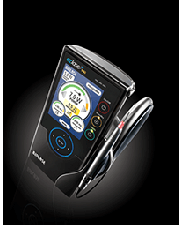If the traditional method of snipping with scissors is used, it is not possible to release the lip as the lip is fleshy. The lip would bleed if cut or snipped, requiring sutures. No infant would be able to tolerate this amount of treatment, so a general anaesthetic would be required. The lip is held up and either two fingers are placed under the tongue, or a tongue retractor is placed under the tongue. Most infants will cry while you do this and this facilitates the procedure as the mouth is opened for crying. Given that the baby remains still, the upper lip is released in under a minute.

PAIN
- The baby will experience some pain and discomfort after the procedure, until the ulceration has healed. The baby should be given age appropriates paediatric analgesics during the healing phase.
- It is helpful to give the first dose of analgesic before treatment is carried out. For babies less than 8 weeks old, the analgesic is the sucrose and other sugars is breast milk.
- Most babies will cry during the procedure, including reddening of the face. However, the baby is not under pain as the anaesthetic that has been given. They may be objecting towards being held and the intrusion in their mouth.
- Babies settle once they are reunited with their mother and begin to breastfeed. The rapidly absorbed sugars present in breast milk are a very effective pain reliever. Babies are required to be hungry at the time of the procedure, so that this feeding can occur quickly following the procedure.
- Some babies are a little unsettled for several days after the procedure, as the upper lip may swell slightly for 24 to 48 hours. Furthermore, feeding may be difficult for several days as moving the upper lip and tongue may be uncomfortable for the baby.
BLEEDING
If a baby accidentally scratches the wound (very rare) the wound may bleed. Sit the baby up on your lap and with a clean tissue apply pressure to the wound for several minutes. If you are worried seek medical advice. Bleeding after laser surgery is extremely rare. Placing socks on babies’ hands for 48 hours should prevent scratching the wound.
INFECTION
This is a very rare complication. But infection is possible after any surgery however minor. Infection will cause pain, swelling, redness, reluctance to feed and possible bleeding. If you suspect infection you should bring your baby to your medical practitioner straight away.
RECURRENCE AND ADHESIONS AFTER TONGUE TIE / MAXILLARY FRENULUM SURGERY
Following frenectomy, once the baby has been fed, you will find a small diamond shape patch under the baby’s tongue. This may vary in size, from approximately 4 to 10 mm and will be grey/black in colour. After several days as it heals, it resembles an ulcer (a yellow/greenish diamond shaped are) which is the normal healing of the tissue in the mouth and is not an infection. Recurrence of tongue tie is not due to the membrane growing back, it is due to the diamond shape wound of the frenectomy adhering or scarring and then the resultant scar contracting. It is estimated that there is a 4% indigence of scarring causing the tongue to tighten again after release. To ensure optimum surgical outcomes for frenectomy, it is necessary to ensure that the wound heals without scarring or tightening of the wound. If there is a recurrence of tongue tie, it will take several months and will be incomplete. Most mothers are already weaning their baby, so a small recurrence at this stage is of no importance and will not require nay treatment.
